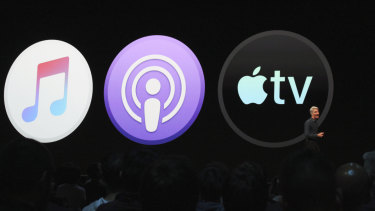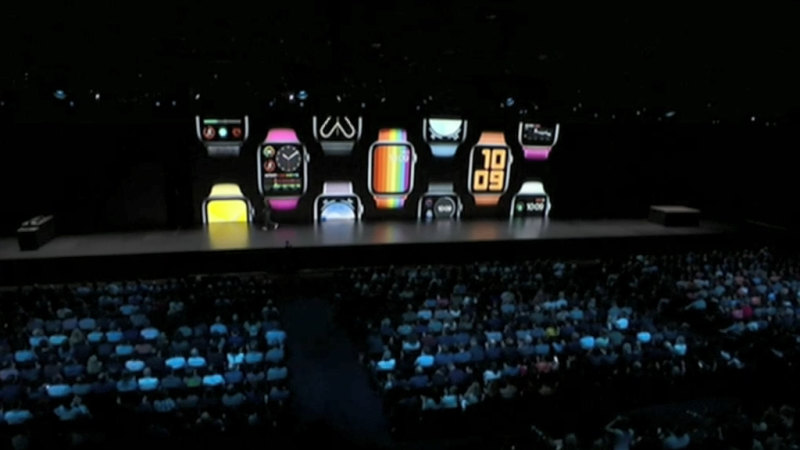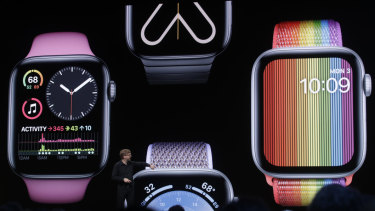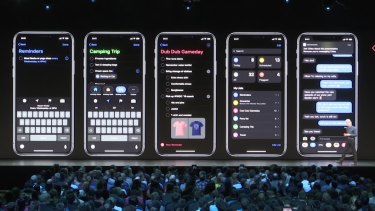At Apple’s big World Wide Developers Conference, creativity was the theme, with new devices and plenty of improvements aimed at creative professionals and developers.
But there was also a new operating system announced in iPadOS, along with news of iOS 13, watchOS 6, MacOS 10.15 and tvOS 13 updates. And that’s not to mention the death of the iconic iTunes app.

What was once iTunes will soon be Apple Music, Apple Podcasts and Apple TV. iPhone and iPad users will be used to this separation, and it works in much the same way. When you upgrade to MacOS Catalina, your library will automatically be split and ported into the three apps.
The experts in my WWDC briefing reassured me that all your metadata, music and videos will come across and it won’t be another Music Match debacle. However, they weren’t able to say what would happen if you currently use two different iTunes libraries on your computer, or what exactly will happen to any home videos, movies or TV shows you got from sources other than the iTunes Store, yet organise in iTunes. They thought it would be safe, and not like the iPad version which doesn’t show those videos unless you’re in Airplane Mode, but we’ll hopefully learn more closer to launch.




Privacy upgrades and new Macs among announcements at Apple conference
Apple have announced a host of new products and upgrades at their 2019 Apple Worldwide Developers Conference in California.
The other big new thing coming to MacOS, which was demoed at the event, was Sidecar, letting you use an iPad as a second display for your Mac without needing any special dongles. It works wirelessly or using a cable, and functions pretty much exactly as you would expect a second screen to. You can operate it with a mouse, or you can still use the Apple Pencil on the iPad, basically allowing it to be used like a graphics tablet, which must have Wacom feeling a little nervous.
Meanwhile the iPad is growing up and throwing off its iOS chains, getting a bigger, beefier iPadOS, which allows it to become more like a touchscreen Mac. Gestures and multiple windows of apps are hugely helpful, as are desktop version of websites. Plus it finally has external drive support, a proper files app and mouse support. This is probably what the iPad should have always been, and it’s nice to see it get there.

Some of the biggest changes came to the watch, which is no longer beholden to what apps you have on your phone. That’s likely going to change the way a lot of people use their Apple Watch, and perhaps might get developers to look at it less as an iPhone accessory, and more as its own thing.
There were also new watch faces, which ranged from the minimalist Gradient face, whose ripples follow the path of the hands, to the complicated beauty of the Solar face. The Solar and California faces are the new go-tos for those who like ‘complications’ (extra info on the display at a glance) and are similar to the current Infographic face in that regard. Solar also boasts a 24-hour clock in addition to the regular 12-hour, and shows the path of the sun, while the California has a mix of roman and western arabic numerals, which just looks neat.
Changes to the Health app were announced for the Watch, but also come across to iOS. The decibel meter is going to be hugely positive for auditory health, and helping people learn more about noise pollution and how sound can damage hearing.

Another welcome announcement was Cycle, Apple’s new way to help people track their periods. While such a normal part of owning a uterus shouldn’t be considered taboo, it is. And seeing this feature announced at such a huge tech event, which still has a majority male audience, was huge. Having witnessed it in action, it certainly seems like the easiest to use and most intuitive tracker I’ve seen. You can log symptoms and get notifications about your fertile window or incoming period right from your watch. You can also see trends and make notes in the iOS app.
The only disappointing thing about the Cycles feature is that Apple is currently only planning to make it available to people who identify as female in the Health app, which alienates trans and intersex uterus-havers. But hopefully Apple will change that, and make it so people who select male can opt-in from settings if they choose. At least the language in and around the Cycle app itself isn’t gendered, which is good.

Dark mode on iPhone is now a thing. It’s perhaps not quite as exciting as the hype suggests, but it sure does look nice, and is a bit easier on the eye in darker situations.
Also on iPhone is the redesigned photos tab, which allows you to see your photos in ways that are more useful. View the highlights of a day, month or a year which bring back memories, rather than whatever screenshots or expense receipt photos you took. It’s building on what Apple already started with the For You tab in the iOS 12 photos app, and allows you to go back through highlights of birthdays and trips. The autoplay videos and live photos are another nice touch which helps you take advantage of your photos.
Perhaps the most important change to iPhone are the new location controls. You can no longer give apps carte blanche to track you in the background forever. Now you can give permission to track you while the app is open, and provide background permission day by day when you need it. Apple’s also shutting down apps’ ability to track you in the background using Wi-Fi and Bluetooth, which is a step forward for privacy.
On top of that, reminders are being overhauled across the board, and app downloads are getting smaller.
Overall, there are a lot of solid improvements coming later this Spring for Apple users.
[“source=smh”]
